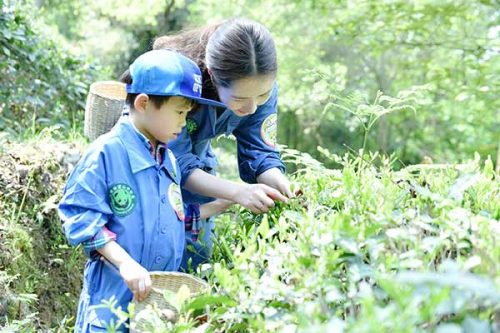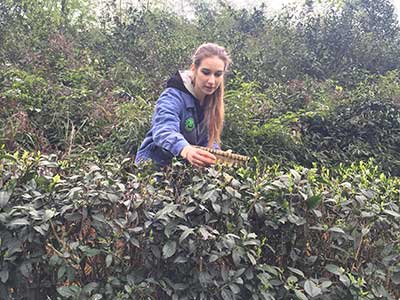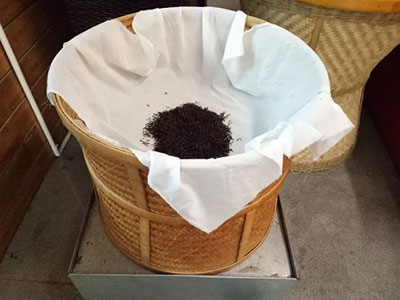Panda Eco Tea
Panda eco tea, also known as “gungun tea” is a kind of black tea, grown in the pandas’ habitat and fertilized by panda feces.
- Location: Dujiangyan Panda Base
- Duration: half a day
- Availability: All year round
- Age: 12-60 (Participants who are under 18 must be accompanied by guardians or the elder capable and healthy enough)
- Number of Volunteers: 6 or above
- Type: Tailor-made

Why panda feces used as fertilizer for the tea plants?
Pandas have relatively weak digestion functions so that only 30% of the nutrition from the food can be absorbed into their body, the rest all hidden in the feces; and bamboo as the major food for pandas has anti-cancer effects, so the feces making the panda tea good for health as well.
Four Steps for Making Tea
Step 1: Picking

Picking tea leaves is the first and also the most important step. Picking the right tea leaves can be decisive to the quality and quantity of tea, but also influential to the future growth of tea plants.
Step 2: Withering

Withering is the result of natural water loss of tea leaves. It is a very important step for the aroma accumulation for tea leaves. Traditional natural way of withering ensures the panda tea tastes mellower and thicker.
Step 3: Rolling

Tea leaves are rolled fully, in order to get a good shape of the leaves and rich aroma. The leaf cells are broken down and juices then released to give the tea its flavor.
Step 4: Baking

In this step, the fermented tea leaves are baked in a high temperature, to terminate the fermentation process, lose water inside, make them easy to store, and get rid of the flavor of grass and keep that of the tea.
